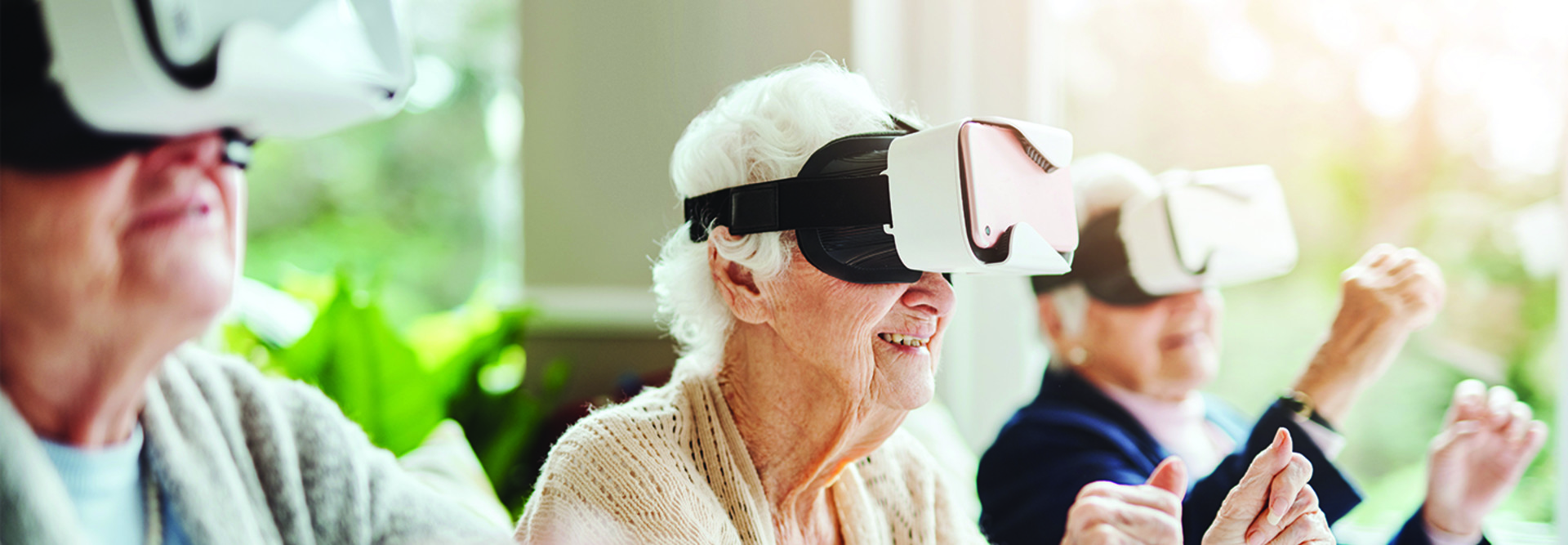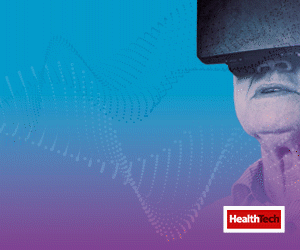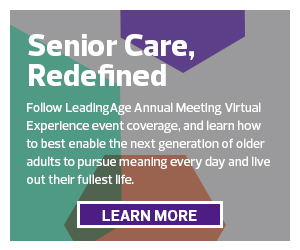Senior care employees provide vital and compassionate services, but some of the physical spaces where they work can present an image problem.
Gathering spaces, apartments and restrooms might be decades old, with dark or unwelcoming decor. More pressing is a lack of integrated technologies that can exacerbate the isolation of seniors during the pandemic, and even affect their safety.
Updating these residences to meet the evolving needs of older adults — and to better address COVID-19 — requires more than a touch-up, some panelists noted in sessions this and last week at the LeadingAge Annual Meeting Virtual Experience.
“The facilities need to be fundamentally redesigned,” said Jeannee Parker Martin, CEO of LeadingAge California, part of the national association of nonprofit providers of aging services. “We need a creative and more intensive approach … to reimagine a place where we want to go to receive care when we need it, both for the short and long term.”
Construction of new nursing homes, she added, is typically a 10-year project, so existing providers must think about innovations that aren’t yet mainstream.
They should also keep an open mind toward tools residents might want to maintain independence, enjoy a high quality of life and connect with the outside world. Just as important, panelists said, is robust Wi-Fi infrastructure that can be scaled up over time.
Those sentiments have grown in recent months as senior care providers look to videoconferencing platforms and mobile technologies as a lifeline. “It’s just been this great time of discovery — that ‘wow, I can do this’ moment” for older adults, LeadingAge president and CEO Katie Smith Sloan recently told HealthTech.
Integrate New Tech Throughout the Residential Experience
Mobility programs remain critical to help staff communicate while keeping their distance. Meanwhile, tools such as iPad devices and smart speakers allow residents to video chat, digest news and movies, and enjoy meetups such as virtual bingo and birthday parties without leaving their rooms.
Some ideas can be simple. A recent deployment of 600 voice-powered Amazon smart speakers has aided residents at Friendship Senior Options in Schaumburg, Ill., Stephen Yenchek, the community’s president and CEO, told LeadingAge attendees last week.
In the future, bolder ideas could become a part of the landscape to address staffing shortages that have challenged the senior care industry since long before the pandemic.
“Think about robots to manage social isolation, personal care activities and feeding — elements perhaps we would not have thought about previously,” Martin said. The use of robots to clean rooms with UV light is another likely scenario.
Sensors that employ artificial intelligence and machine vision to monitor the gait and movement patterns of older adults also are promising. By analyzing this data, the tools could help caregivers and loved ones act to reduce the chances of a resident falling.
Similar remote technology might be used to passively scan a resident’s face and body to collect vital signs such as heart rate, oxygen saturation and blood pressure.
In either case, “it doesn’t involve a clinician sitting behind a monitor, nor does it involve any type of livestream; it’s ultimately a computer that’s watching and calling it out,” said Justin Smith, manager of innovation and technology of the Direct Supply Innovation and Technology Center at the Milwaukee School of Engineering (MSOE), told attendees.
Sensors and AI in Senior Care Boost Safety, Communication
Other technologies that could play a pivotal role in senior care may seem futuristic right now, but they’re quickly becoming mainstream.
Some of the shift has been driven by pandemic response, Smith said, but added the tools could be used for future illness outbreaks and during flu season.
HOME HEALTHCARE TECH: How to Improve the Patient Experience
One notable development: thermal cameras that can be stationed at a building’s entrance to take a visitor’s temperature in a touchless exchange. By identifying anyone with a fever (a common but not definitive symptom of COVID-19), the tool allows teams to redirect high-risk individuals and collect their data for contact tracing.
Some communities, Smith said, are starting to use ionized air-filtration systems to quickly capture and deactivate foreign particles.
Even toilets could one day offer insights by employing AI sensors to scan outgoing waste for traces of a virus so communities can examine the scope of an outbreak.
Still, a guiding strategy should inform any new or future effort, regardless of its size.
Said Liz Jensen, clinical director at MSOE’s Innovation and Technology Center: “Communities must first ask: ‘Do we understand the problem so we can bring some innovation against it?’”
Keep this page bookmarked for articles from the event. Follow us on Twitter @HealthTechMag as well as the official organization account, @LeadingAge, and join the conversation using the hashtag #LeadingAge20.













